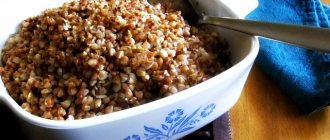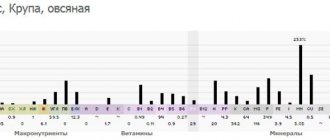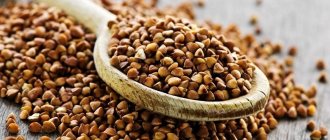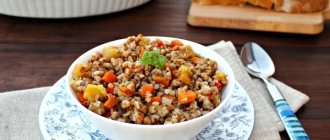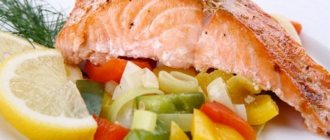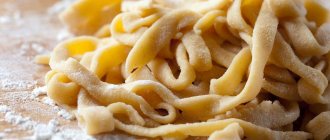Nutritionists say that nuts are an important component of any person’s diet. They contain a large amount of minerals and vitamins. By consuming the daily amount per day, a person will begin to feel better within a few days. Doctors advise eating a handful of nuts a day, but everyone’s palms are different: some have more, some have less. Therefore, you need to know how many nuts you can eat per day in grams and how much one walnut without shell, almonds, peanuts, hazelnuts and other nuts weighs.
What is the average weight of nuts without shells and individually?
Nuts and seeds are a real storehouse of vitamins and microelements.
The substances they contain strengthen the immune system, improve blood circulation and stimulate brain activity, so nutritionists advise everyone who cares about their health to eat a handful of nuts every day. However, we must remember that this is a very high-calorie delicacy: 100 grams of nuts contain approximately 650 kcal, so you shouldn’t get too carried away with them either. Since “a handful” is a relative concept, we will tell you how many nuts you can eat per day without fear of gaining excess weight.
Other products
For convenience, the list is compiled in alphabetical order:
Walnuts
Shelled walnuts
The weight of 1 walnut depends on its size and variety and is, on average, 10-15 g. At the same time, a kernel without a shell is about half lighter than 1 walnut in a shell. The weight of a kernel of 1 medium-sized walnut is usually 5-7 g. Taking into account the fact that it is recommended to consume from 30 to 40 g of walnuts per day, we can calculate that the daily requirement of this delicacy for an adult is 6-8 whole kernels.
In terms of calories, this means that 1 walnut without shell contains approximately 30 kcal, and the daily requirement is 200-250 kcal.
You can also determine the weight of nuts using a measuring cup: in a standard 250 ml glass you can collect approximately 165 g of walnut kernels.
Pivot table
Below is a table that contains the necessary data to strengthen the body with vitamins and minerals found in nuts.
| Weight (1 piece) | Weight (1 tbsp) | kcal per 100 g | Daily norm, g | |
| Walnut | With shell (unshelled nut) – 25-30 g Without shell – 5-10 g | 11 g | 656 kcal | 5-7 cores |
| Almond | 1-2 g | 8-10 g | 579 kcal | 30-50 gr |
| Hazelnut | 1-2 g | 700 kcal | 30-50 gr | |
| Peanut | 0.1-0.3 g | 11-12 g | 550 kcal | 15-20 cores (children 8-10) |
| Muscat | 3-8 g | 13-15 g | 556 kcal | 2-3 cores |
| Cashew | 2-3 g | 10-11 g | 600 kcal | 20-25 gr |
In order to get the maximum benefit from ripe nuts, you need to eat not just one type of fruit, but several. If it is not possible to eat nuts daily, it is recommended to buy nut mixtures, which are sold in any grocery store, 2-3 times a month.
Cedar
Pine nuts are so small that up to 150 seeds can fit in a cedar cone, where they ripen.
Shelled pine nuts
The weight of a pine nut is also small:
- 1 PC. in the shell it weighs about 0.25 g, and without the shell it is half as much;
- 1 tablespoon contains 30 g of peeled pine nuts;
- in a glass – 190 g.
One pine nut contains 3 kcal, so you can eat about 80-100 nuts or one and a half tablespoons individually during the day. Despite their miniature size, pine nuts are extremely rich in vitamins E and B, which protect cells from aging and have a positive effect on all body systems. It is best to store pine nuts unshelled, since without the shell they oxidize and go rancid, losing their beneficial properties.
How to measure a serving of peanuts
To find out the weight of the available serving of peanuts without using a kitchen scale, you can use available items. For example, a spoon, a teaspoon or a tablespoon, a glass, a liter jar. With their help, you can also measure the required number of kernels of this legume when preparing any dish, if the recipe indicates the weight of the ingredients.
To do this, you need to know how many grams of peanuts fit in a particular measuring container:
- a teaspoon contains 8 g of peanuts;
- a tablespoon of these beans contains 25 g;
- 140 g is placed in a glass with a capacity of 200 ml;
- a liter jar will contain 650 g.
The fastest and easiest way to measure 100 g of peanuts is to take 4 tbsp. l. its cores. In this case, a serving will contain from 200 to 330 pieces.
The above figures are for shelled peanuts. If you need to measure an unrefined product, you need to remember that only 270 g fits in 1 liter.
When resorting to this method of measurement, the measurer must take into account the error. It is 15-20%. This is due to the fact that the shape of each kernel is unique and it will never be possible to fit them into measuring containers equally tightly.
A 200 ml glass yields approximately 140 g of peeled peanuts.
Almond
Almonds are a rich source of healthy fats, saturated acids and vitamins. Thanks to the high content of the powerful antioxidant vitamin E, it protects the body from premature aging and increases its resistance to viral infections.
When buying almonds, you should pay attention to the appearance of the kernels: they should be large and whole. If you buy it in shell, choose clean, dry, uncracked nuts.
Almond weight:
- 1 PC. - from 1 to 5 g;
- 1 tablespoon – 30 g (180 kcal);
- glass – 165 g (990 kcal).
Peanut butter weight
Peanut butter is ground peanut kernels mixed with vegetable oil and salt. It has a uniform consistency, so measuring the required weight of such a product using available tools is much easier.
In this case, you need to keep in mind the following relationships:
- in 1 tsp. is 12 g;
- in 1 tbsp. — 35 g.
Doing this with a kitchen scale is more difficult: you need to have a model that allows you to subtract the weight of an empty container from the result or know exactly how many grams are in the container used for measurements.
There are 100 g of peanut butter in a tablespoon.
Muscat
This is one of the most famous spices in the world. However, what is commonly called nutmeg is, in fact, the seed inside the seed of the nutmeg fruit. In one harvest year, the tree produces several thousand fruits the size of a ripe apricot. After ripening, the fruits burst in two, so removing the seeds from them is not difficult.
To obtain the spice, the seeds are first winnowed in the open air, then peeled, after which the kernels are dried again over a fire. The finished nut is approximately 1.5-2 cm in diameter and has an oval shape, with the largest nuts being considered the most fragrant.
Nutmeg weight:
- 1 PC. – 3.5 – 5 g;
- 1 teaspoon (nutmeg powder) – 5-6 g.
Since nutmeg has a hot, spicy taste, it should be added to the dish very carefully. In addition, nutmeg contains dangerous substances that, if consumed in moderation, can cause severe food poisoning.
Each variety of nuts has a large supply of vitamins and minerals, which makes them an indispensable component of a healthy diet. They boost immunity, support heart and brain function, and lower cholesterol levels. But like any nutrient-rich food, they can cause allergies and also lead to weight gain.
However, despite the high calorie content of nuts, there are many ways to include them in a balanced diet and not gain weight: nuts and seeds can be used as a snack (not forgetting the recommended daily allowance), and also added to vegetable salads, whole grain bread, sauces and gravies.
its chemical composition and calorie content
Tenderly sweet, crunchy and delicious, cashews are full of antioxidants, minerals and vitamins that are essential for excellent health. It is one of the popular ingredients in sweet and savory dishes around the world. Detailed information about how many grams one nut weighs, its chemical composition and calorie content will be of interest to anyone who prefers a healthy diet and controls their weight.
ShowHide
Chemical composition of cashew
Botanically, the cashew is a medium-sized tropical evergreen tree belonging to the family Anacardiaceae, genus Anacardium. Scientific name: Anacardium occidentale.
The tree bears many edible, pear-shaped false fruits called "cashew apples." The nut is firmly attached to the lower end of the false fruit and looks like a beater in a bell. So what you buy in the store is a drupe with a hard outer shell enclosing a single edible kernel, commercially known as cashew.
The nut is about 2.5 cm long and 1.2–1.5 cm in diameter, kidney or bean shaped, with a smooth surface and a pointed end. Each nut is divided into two halves, as in legumes. The creamy white kernel has a firm, crunchy texture and a sweet, buttery flavor.
Nuts contain soluble fiber, vitamins, minerals and numerous health-promoting phytochemicals that help protect the body from disease and cancer.
Did you know? The cashew shell is made of toxic phenolic resin.
-
urushiola.
The strong, caustic toxin irritates the skin and is removed by applying very high processing temperatures. Peeling raw nuts fresh from the tree is
hazardous to your health.
The nut is rich in heart-healthy monounsaturated fatty acids, such as oleic and palmitoleic acid. These essential fatty acids help lower bad cholesterol while increasing good cholesterol in the blood. Nutritionists note that the Mediterranean diet, rich in monounsaturated fatty acids, helps prevent coronary heart disease and strokes, and also maintains a healthy blood lipid profile.
Chemical composition of kernels (in 100 grams):
| Vitamins (% DV/weight) | Minerals (% DV/weight) |
| Thiamine (B1): 37%/0.423 mg | Calcium: 4%/37 mg |
| Riboflavin (B2): 5%/0.058 mg | Copper: 110%/2.2 mg |
| Niacin (B3): 7%/1.062 mg | Iron: 51%/6.68 mg |
| Pantothenic acid (B5): 17%/0.86 mg | Magnesium: 82%/292 mg |
| Vitamin B6: 32%/0.417 mg | Manganese: 79%/1.66 mg |
| Folate (B9): 6%/25 mcg | Phosphorus: 85%/593 mg |
| Vitamin B12: 0%/0 mcg | Potassium: 14%/660 mg |
| Vitamin C: 1%/0.5 mg | Selenium: 28%/19.9 mcg |
| Vitamin D: 0%/0 mcg | Sodium: 1%/12 mg |
| Vitamin E: 6%/0.90 mg | Zinc: 61%/5.78 mg |
| Vitamin K: 32%/34.1 mcg |
Important! Cashew allergy is a common pathology, especially in children. Its symptoms vary from simple itchy skin (urticaria) to a severe form with difficulty breathing, vomiting and diarrhea.
Cashew calories
The nut in question is high in calories. 100 g of fruit will bring 553 calories into your diet.
Nutritional value:
| Parameter name | Indicator value | % of the required daily intake |
| Calorie content | 553 kcal | 28% |
| Carbohydrates | 30.19 g | 23% |
| Squirrels | 18.22 g | 32,5% |
| Fats | 43.85 g | 146% |
| Cholesterol | 0 mg | 0% |
| Cellulose | 3.3 g | 8,5% |
How many grams are in one cashew nut?
The average weight of a nut is indicated differently in different sources. It probably depends on the variety. More often than others, a mass of about 1.5 g for one core is noted. But some sources indicate a weight of 2–3 g.
Nuts are included in the daily diet, they are healthy, they contain many substances necessary for the body. However, the calories obtained from them tend to accumulate and be deposited in the form of excess fat. For this reason, it is important to know how much one nucleolus weighs and how many of them are needed for the body to receive 100 calories. Taking the value of 100 g = 553 calories, we find that there are about 8–8.3 calories in one nut . Fried kernels always become more nutritious due to the oil used during frying.
Important! In traditional Mayan medicine, a tea is made from the leaves or bark of cashew trees to treat diarrhea.
How many grams are in the average daily norm?
Some people are afraid to eat cashews because they are high in calories. At the same time, research shows that lowering cholesterol speeds up weight loss. The secret lies in the right portion: 15 cashews a day is considered a moderate amount.
In accordance with the principles of healthy eating, a daily serving of nuts should contain 30 g, and this does not depend on which of them you take: walnuts, almonds, hazel.
If you take nut kernels weighing 1.5 g, then you will need 20 nuts. But keep in mind that they can be larger or smaller, so it’s convenient to check the weight to control the number of calories using scales. A serving of 30 grams per day will help meet the daily need for essential nutrients , but for those who are losing weight, nutritionists recommend consuming only 4-5 pieces. Moreover, you need to add them to salad or meat sauce.
Did you know? Cashews are grown exclusively in tropical countries because the tree is sensitive to frost and can only adapt to climatic regions that are located between 25° north latitude and 25° south latitude.
How many pieces are in 100 grams of cashew nuts?
Cashews are available in stores all year round. Once the urushiol is destroyed during processing, the shell becomes safe. For this reason, creamy white inshell nuts or shelled kernels are available. The latter can be with natural taste, salted or sweetened.
One bag of nuts (100 g) contains about 120 halves. This means that the weight of each of them is about 1.2 g, and whole nuts weigh 2.4 g. Nuts can also be sold in glasses. One 200-gram glass holds 120–130 g of cashews.
Consuming nuts in the right amounts can help in many ways - they are often associated with reducing the risk of headaches, relieving migraines and improving vision, as well as helping to promote cardiovascular health.
farmer.blog
Hazelnut
Hazelnuts are one of the most common, sought after and beloved representatives of the nut fraternity. Hazelnuts are rightly called a nut, in contrast to peanuts or pine nuts. Hazelnut is the fruit of a tree-like shrub of the Birch family, the so-called cultivated hazel. Hazelnuts, as hazelnuts are sometimes called, have been used as food since ancient times and grew in the Balkans, in the countries of Asia Minor, and in the Caucasus. Hazelnut fruits are almost spherical drops with a pointed tip and a tree-like round base. The shell is light brown, dense and dry, and reliably protects the light beige kernel, covered with a thin brown shell. The hazelnut kernel is almost round, consists of two identical halves, sometimes a small empty cavity forms inside the nut. The nut kernel has a dense and elastic consistency, a bright nutty aroma and a slightly sweet taste.
Measure liquids with a tablespoon
Often in recipes the required amount of oil, water or vinegar is indicated not in milliliters, but in grams. The good old spoon will come to the rescue again. The list includes the most popular liquids used in the cooking process:
- Milk – 20 grams
- Vegetable oil – 17 grams
- Water – 25 grams
- Vinegar – 15 grams
- Liqueur – 20 grams
- Ghee butter – 20 grams
These data can be given in other tables with a difference of five grams. This discrepancy is due to the fact that the spoon can be heaped or not. The above values are the heaped weight of liquids.
Hazelnut calories
If you choose different varieties of hazelnuts for comparison, the amount of nutrients in them will vary slightly. Lincoln University (USA) used for comparison 3 varieties native to the USA but originally grown in Canada, 2 European and 1 local. All trees were at the peak of their development (12 years).
The amino acid content of hazelnuts was the same for each variety, and the structure of essential amino acids was the same as that of a high-quality protein.
Other common serving sizes (calories):
- 10 nuts: 88;
- 1 oz: 178;
- 100 g: 628.
How many grams are in one hazelnut
Harvested hazelnuts in shell weigh from 2.7 to 4 g.
And you can easily verify this if you check the weight according to the varieties registered in the State Register of the Russian Federation:
- Anastasia - 2.5 g;
- Ata Baba - 2.5–3 g;
- Victoria - 2.6 g;
- Caucasus - 2.5 g;
- Kuban - 3.5 g;
- Kudraif - 2.0 g;
- Moscow early - 1.8 g;
- Moscow ruby - 3.5 g;
- Roman - 3.2–3.5 g;
- Trebizond - 4.0 g.
You can peel the kernels, then the weight is 1 pc. will be 1–1.8 g, depending on the variety. If you are thinking about which nuts are more profitable to buy, then the answer to this question is ambiguous.
For long-term storage (longer than 1 month), take nuts in shell. It protects the kernel from contact with air, protecting fats from oxidation. And if you intend to use them right now, you can take peeled ones.

